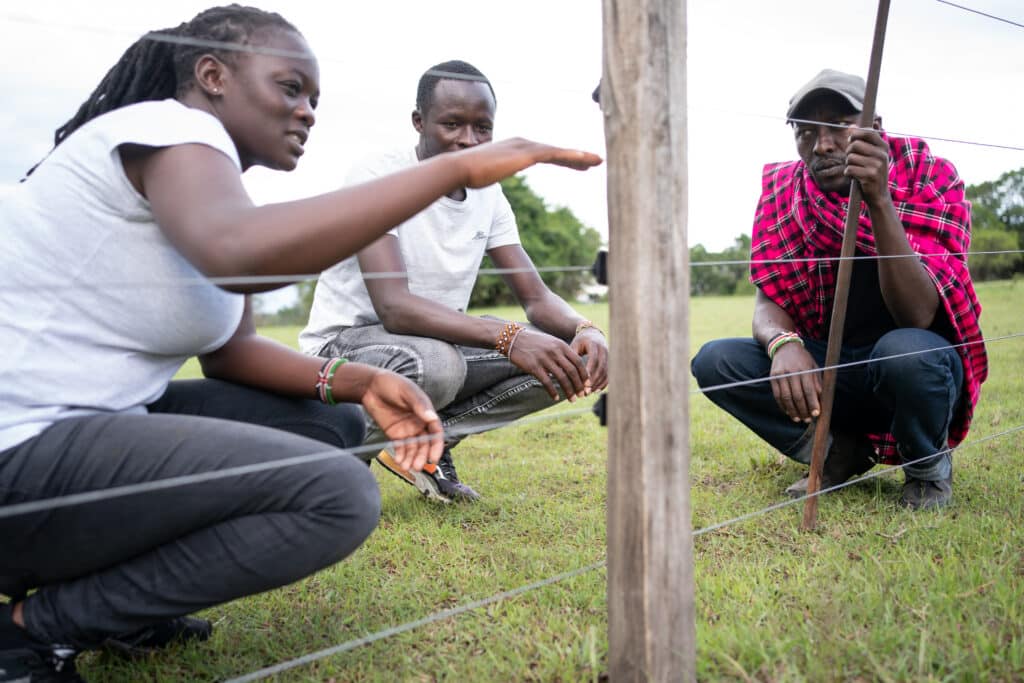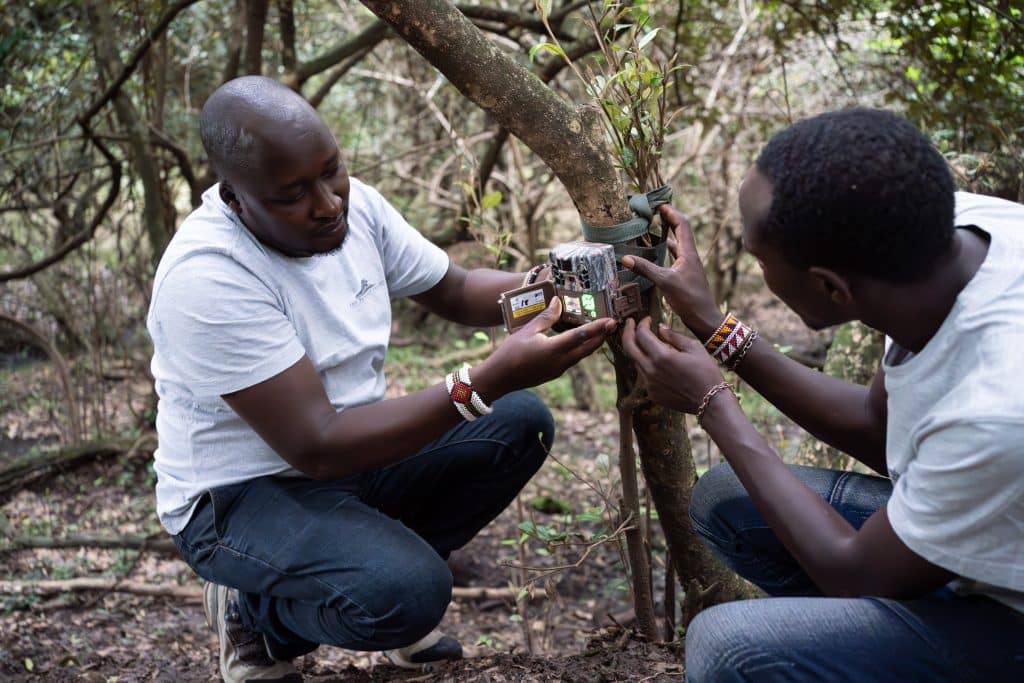Original article published in The Guardian, December 5, 2023, by Peter Muiruri.
Although long thought to be extinct in Kenya, The Pangolin Project, a grantee of the Pangolin Crisis Fund (PCF), has located and is working to protect the small number of giant pangolins left in the country. They were rediscovered in 2018 through several scattered sightings, and since then, The Pangolin Project and Kenya Wildlife Service have been carefully monitoring their fragile population of 30-80 individuals.
While pangolins constantly live under the threat of poachers, one of the surprising dangers that Kenya’s giant pangolins face inadvertently comes from farmers—many farmlands are surrounded by low-voltage electric fences, which keep other wildlife, like elephants, from raiding their crops. But what is merely a mild deterrent for an elephant can be fatal for giant pangolins, which often get caught on the lowest fence wire hovering above the ground right at their level.
The Pangolin Project is working closely with private landowners to address the dangers of human infrastructure to these rare pangolins. They have recruited members of local communities to act as pangolin guardians, who have spoken with over 1,800 local households about the importance of protecting giant pangolins and curbing the unsustainable loss of their habitat for charcoal production. They are also urging local farmers to remove the bottom wire of their electric fences so that the pangolins are not caught upon them and killed.
Recently, Araluen “Azza Schunmann, Director of the PCF, visited The Pangolin Project in the field and was impressed by the dedication of their team and progress that they have made to raise awareness about pangolins. To monitor the pangolins’ movements, the team has also been busy tagging pangolins and placing camera traps near known burrow locations. The PCF awarded its second largest grant ever to The Pangolin Project so that their crucial work can continue and Kenya’s giant pangolins can have a future.




